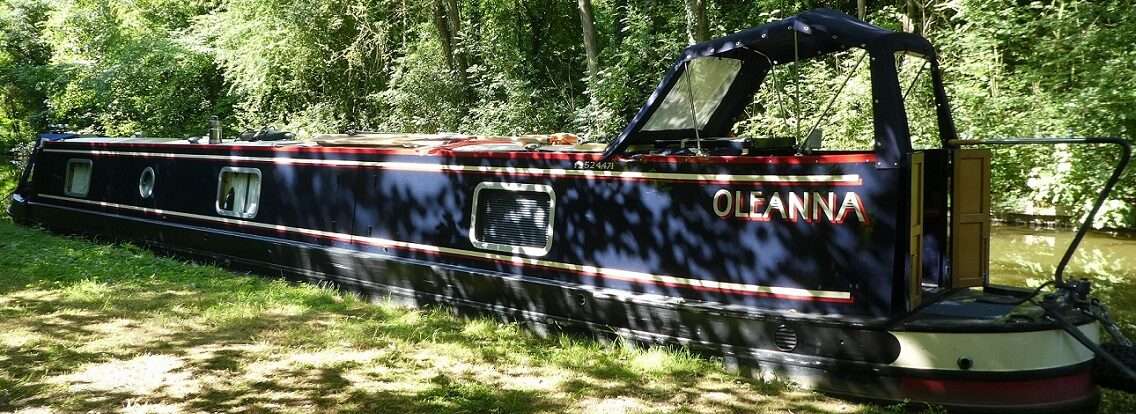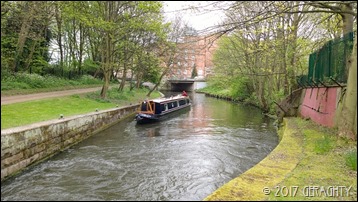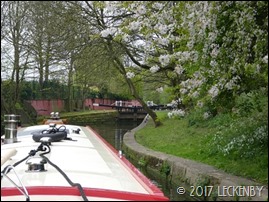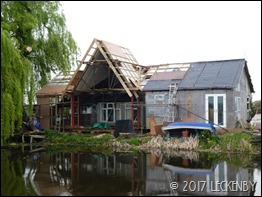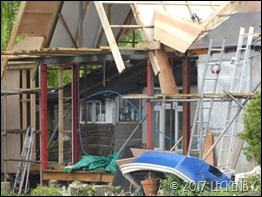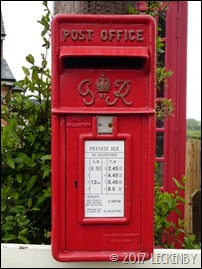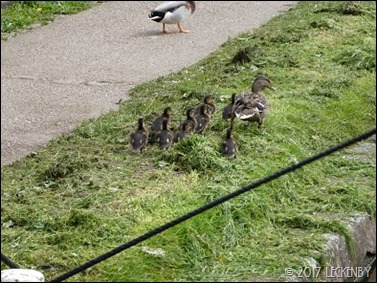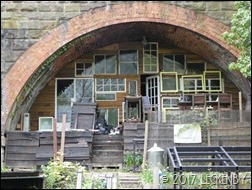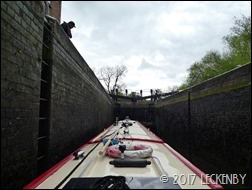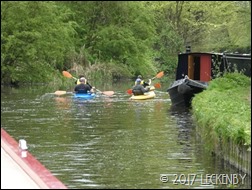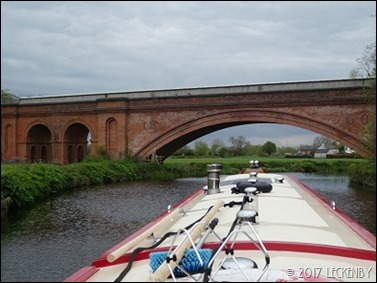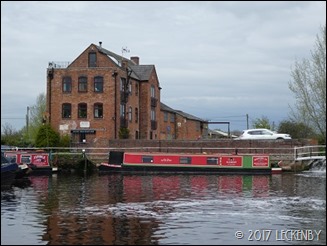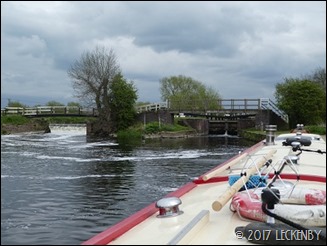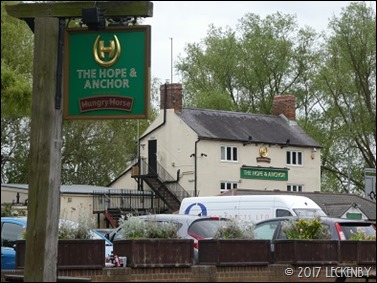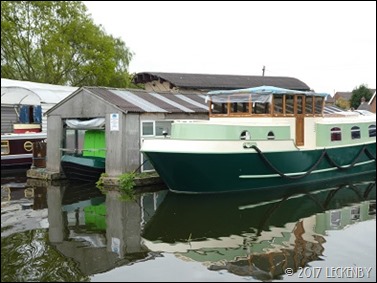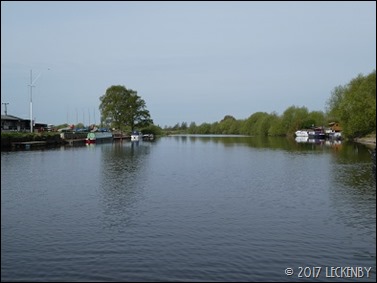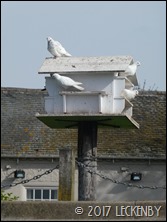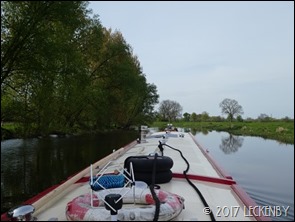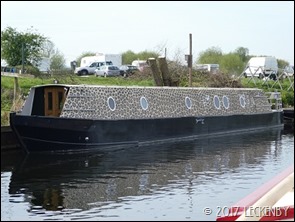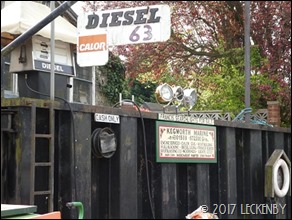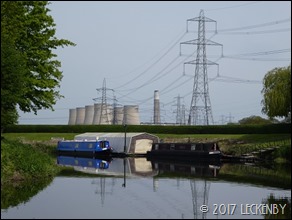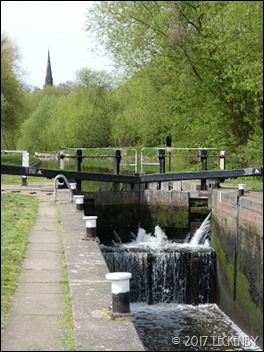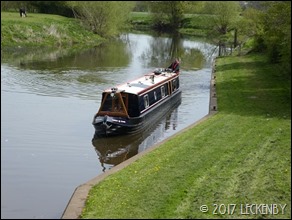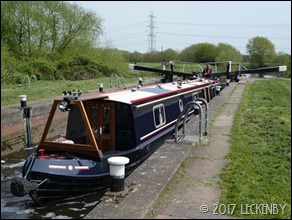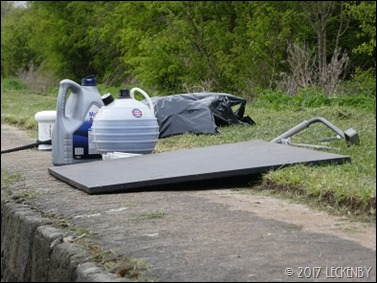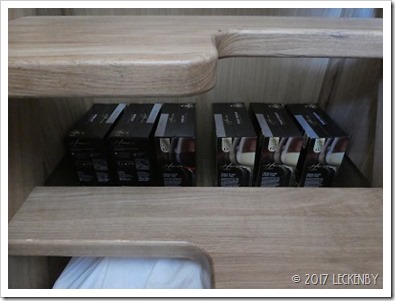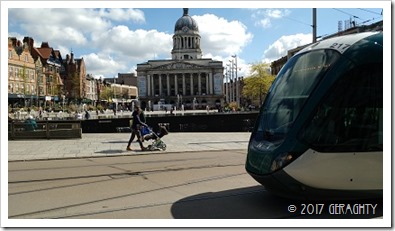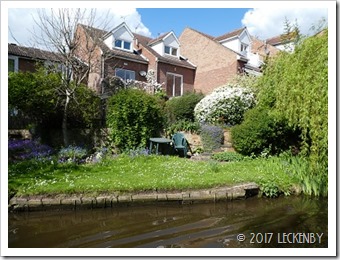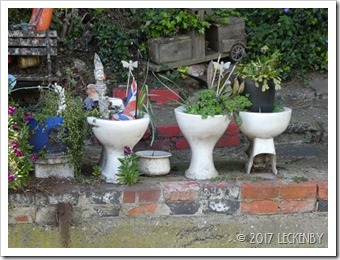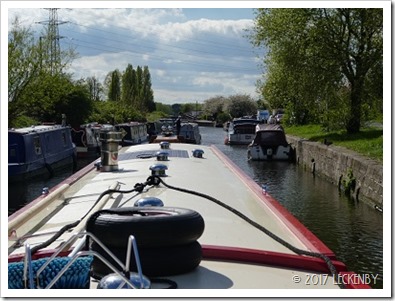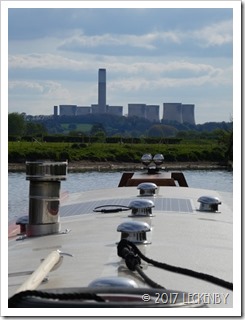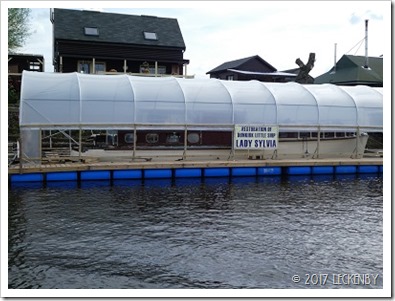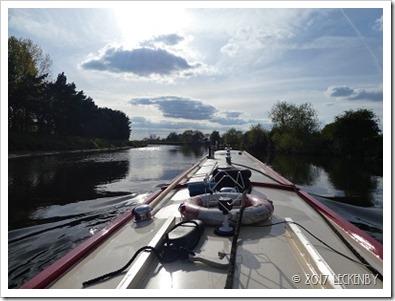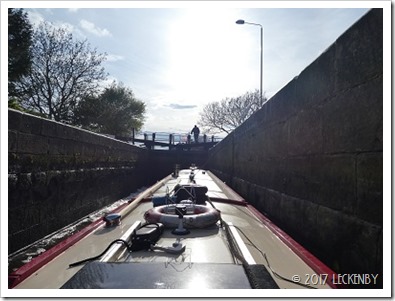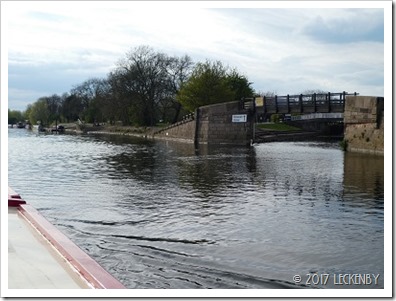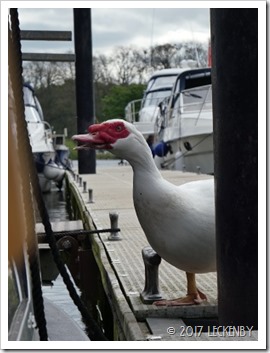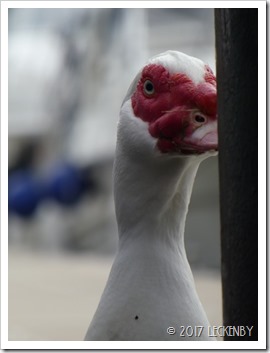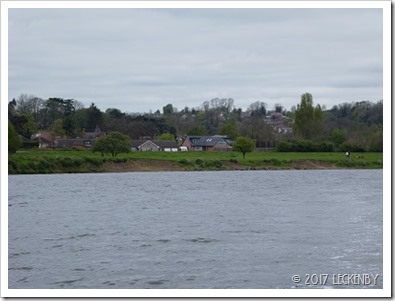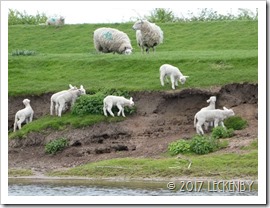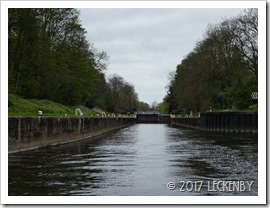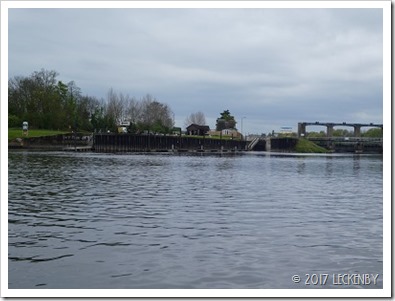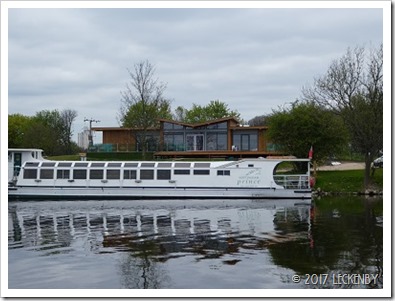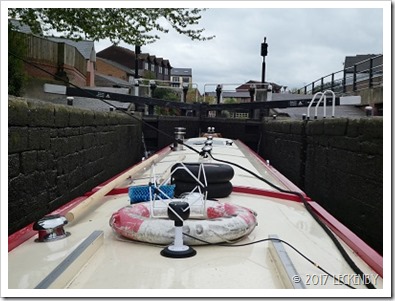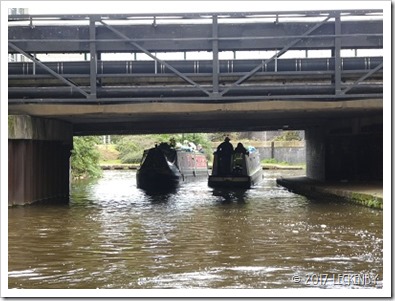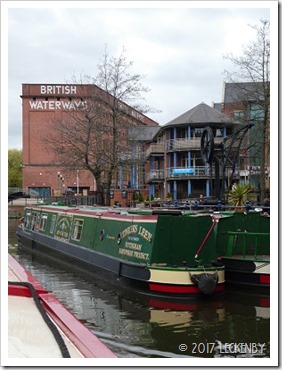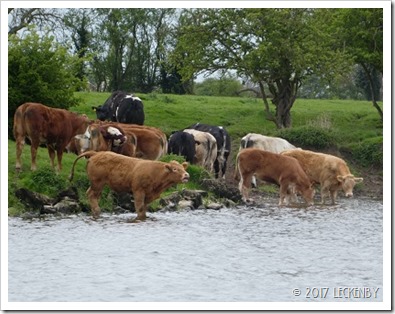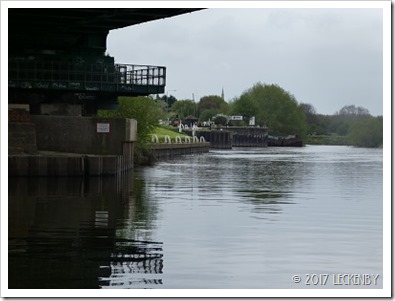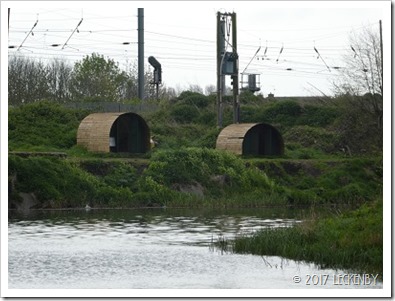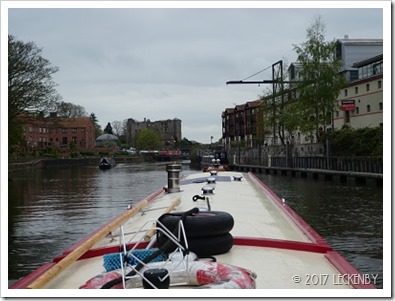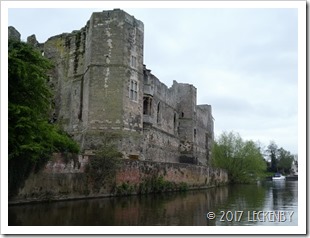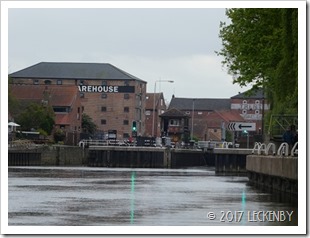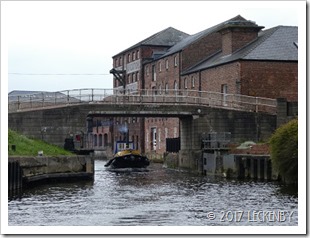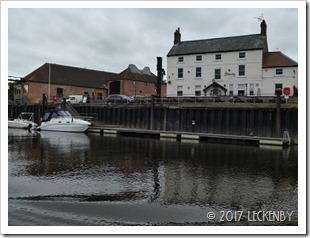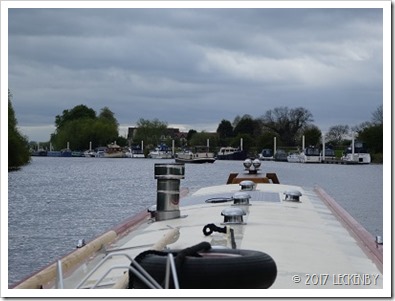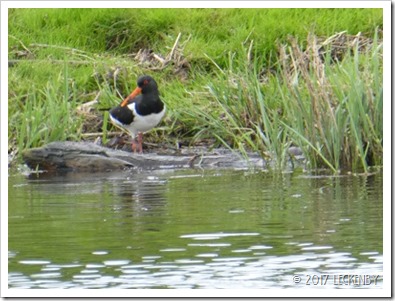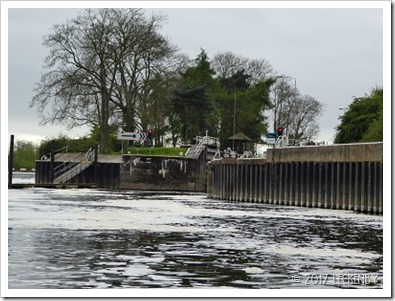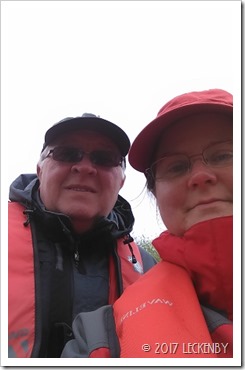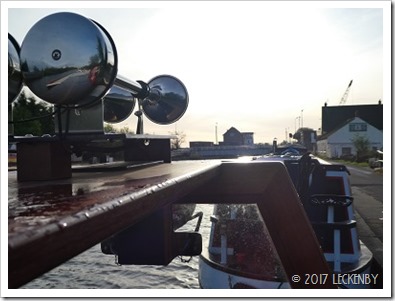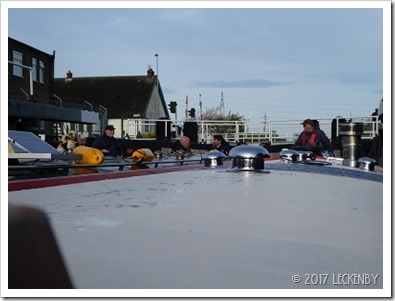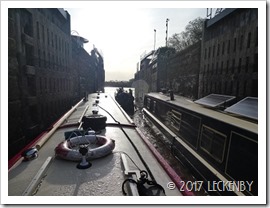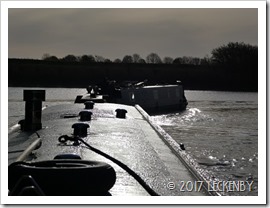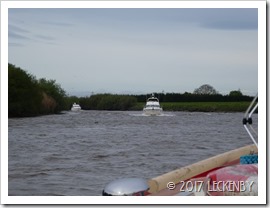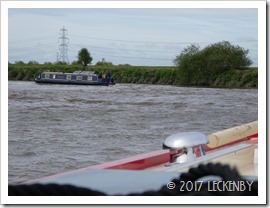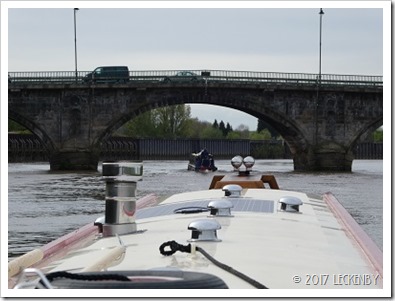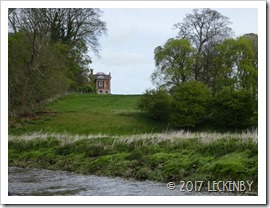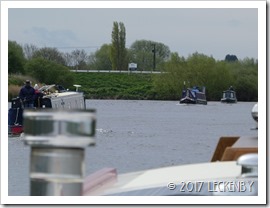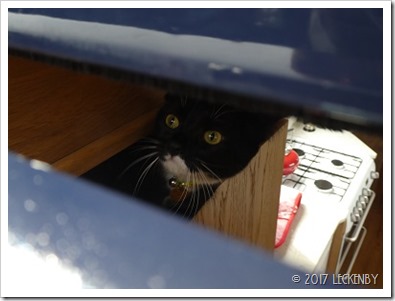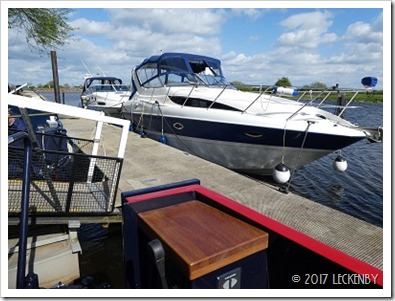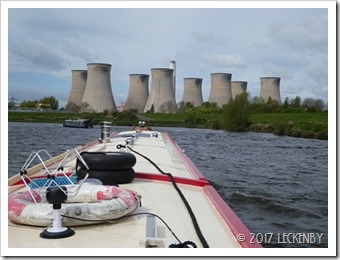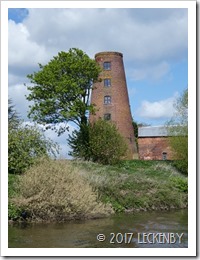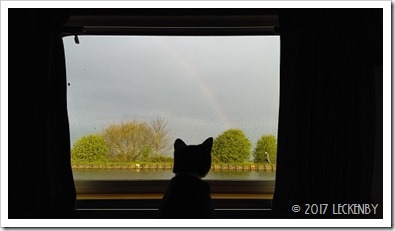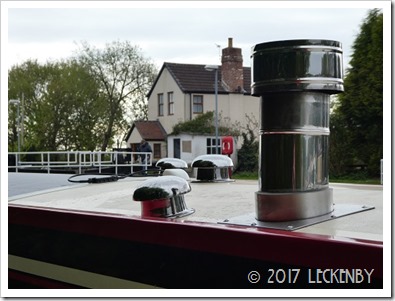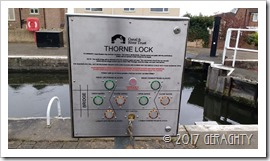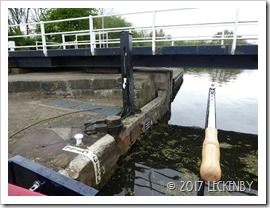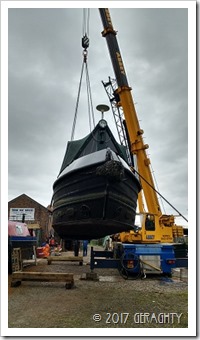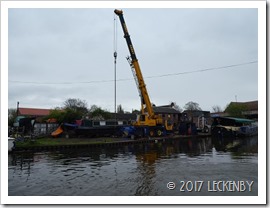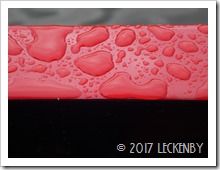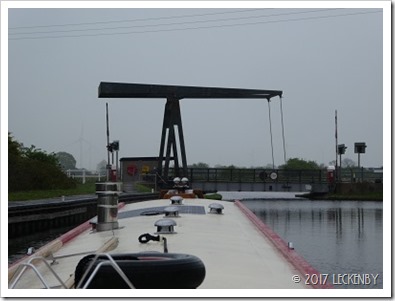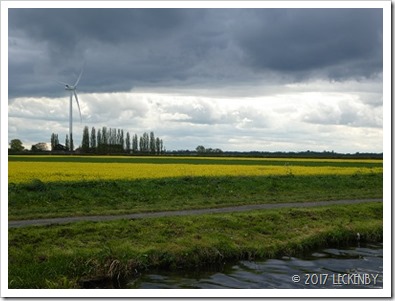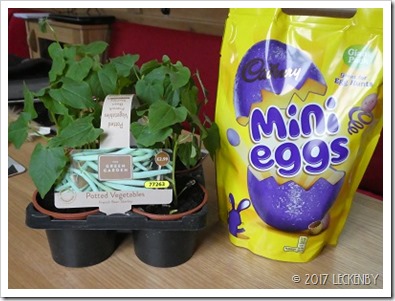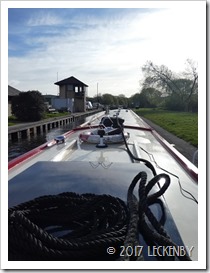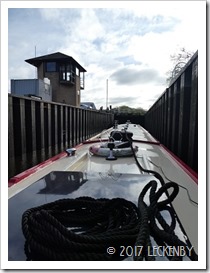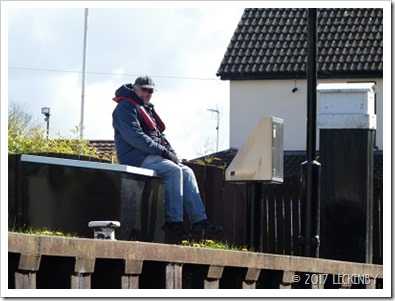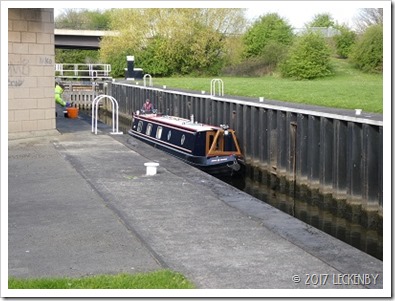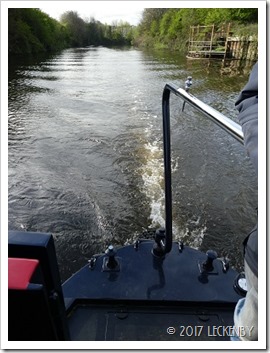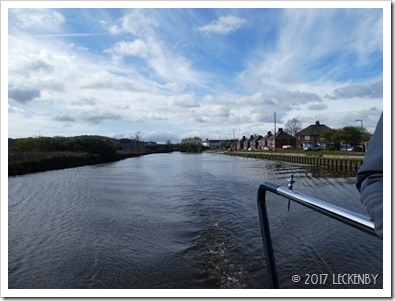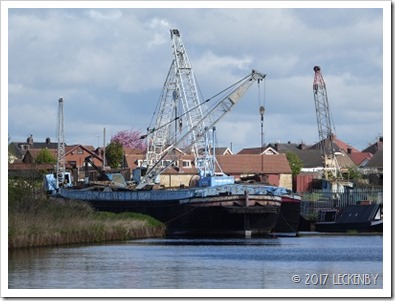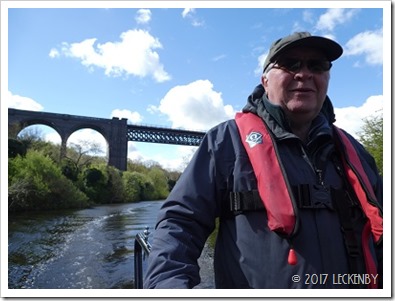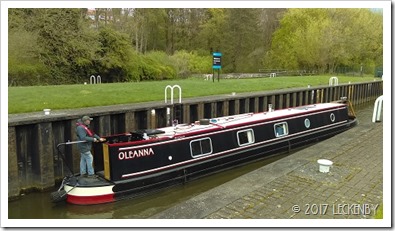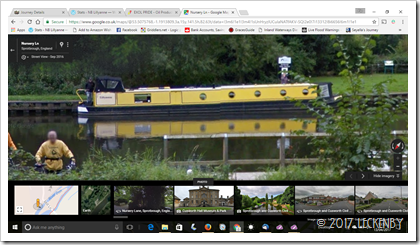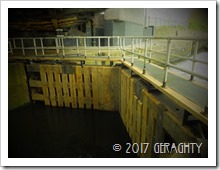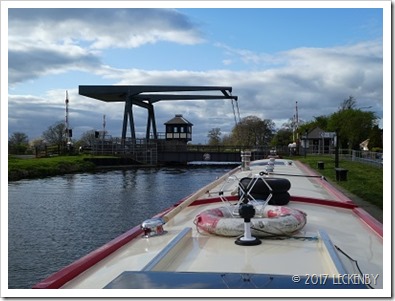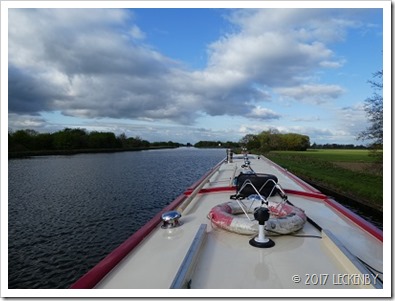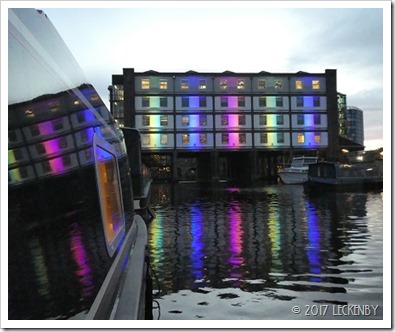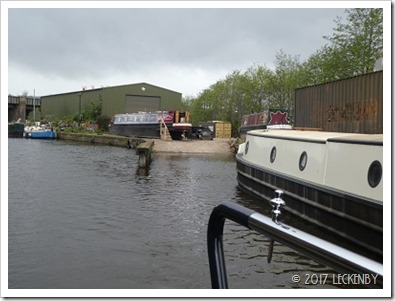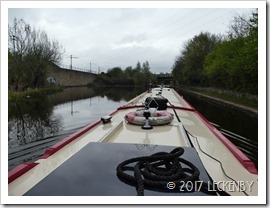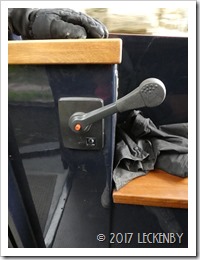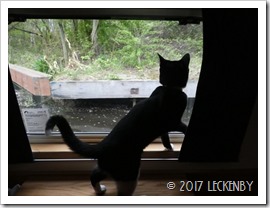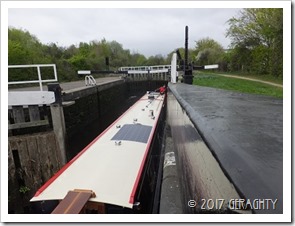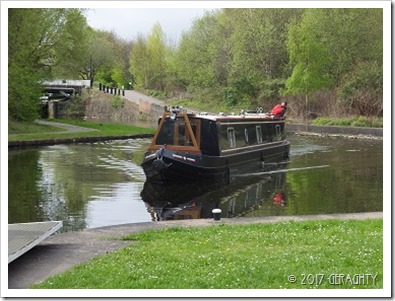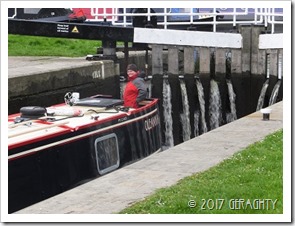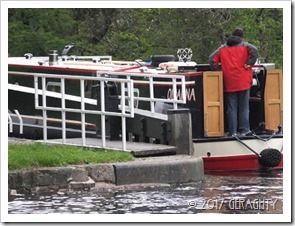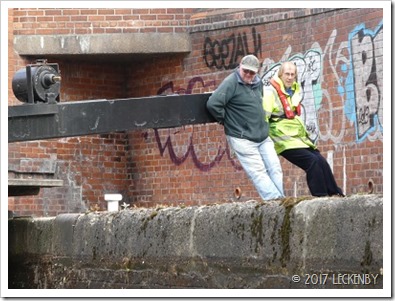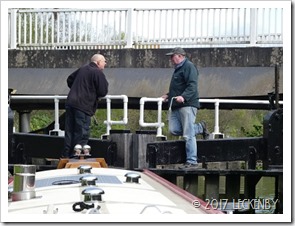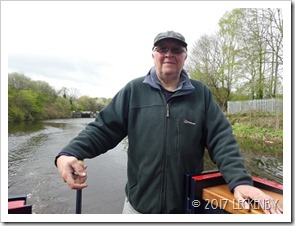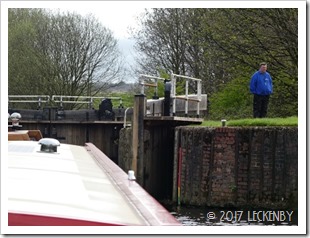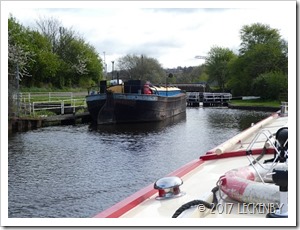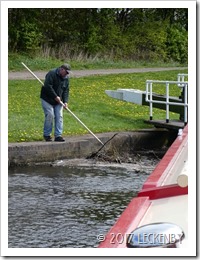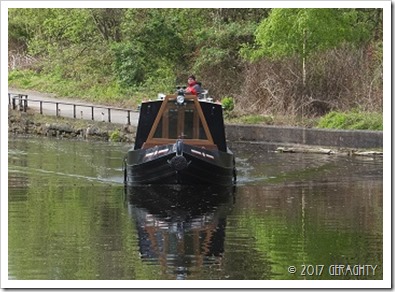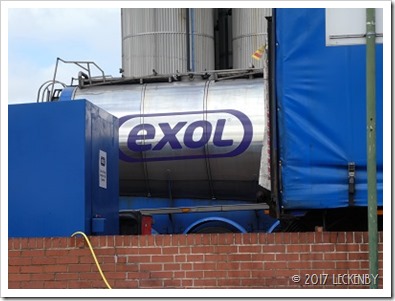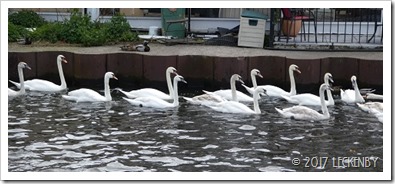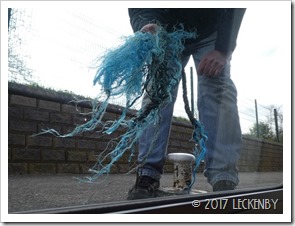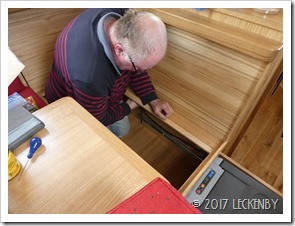Birstall Lock to Kilby Bridge
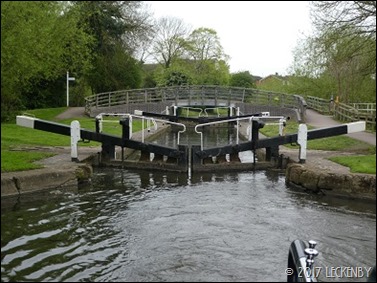 With quite a bit to do today the alarm was set and we refrained from our customary cuppa in bed before getting up. It still took us a while before we were ready to push off at 8.20am. First lock of many was Birstall, this lock was closed for maintenance this winter, apart from quite a bit of orange spray paint about the place it was hard to tell what had been done that took so long. Looking back over our stoppage notices they had found a void under the lock that needed grouting, no wonder we couldn’t see what they’d done, it was all under water.
With quite a bit to do today the alarm was set and we refrained from our customary cuppa in bed before getting up. It still took us a while before we were ready to push off at 8.20am. First lock of many was Birstall, this lock was closed for maintenance this winter, apart from quite a bit of orange spray paint about the place it was hard to tell what had been done that took so long. Looking back over our stoppage notices they had found a void under the lock that needed grouting, no wonder we couldn’t see what they’d done, it was all under water.
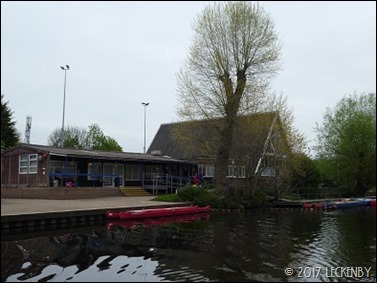 The locks would keep us busy today as there are few pounds over a mile long.The river sections are bendy and we were glad that we’d started early as the number of kids playing at the Outdoor Pursuits Centre meant that there would be plenty of canoes out later on. Here we got a very warm welcome from the kids waving and shouting “Hello!”, wishing us a nice day, they’d catch us up. But the most unusual comment was “I hope you have a nice dinner!” Hopefully we will.
The locks would keep us busy today as there are few pounds over a mile long.The river sections are bendy and we were glad that we’d started early as the number of kids playing at the Outdoor Pursuits Centre meant that there would be plenty of canoes out later on. Here we got a very warm welcome from the kids waving and shouting “Hello!”, wishing us a nice day, they’d catch us up. But the most unusual comment was “I hope you have a nice dinner!” Hopefully we will.
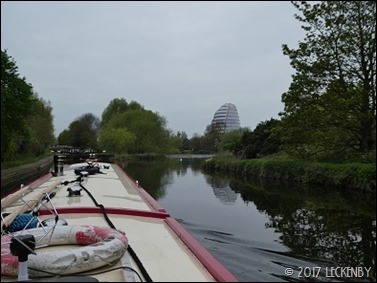 Belgrave Lock is where Canalplan had us mooring last night on our original plan. It is a shallow lock with a wide weir and a view towards the National Space Centre which looks like a giant inflatable. On first viewing it seems like a pleasant place to be. However a recent fire by one of the top beams and the amount of graffiti on the edging to the new towpath suggested that we’d made a good choice of staying one lock further back.
Belgrave Lock is where Canalplan had us mooring last night on our original plan. It is a shallow lock with a wide weir and a view towards the National Space Centre which looks like a giant inflatable. On first viewing it seems like a pleasant place to be. However a recent fire by one of the top beams and the amount of graffiti on the edging to the new towpath suggested that we’d made a good choice of staying one lock further back.
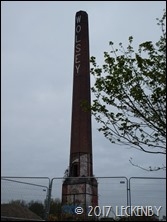
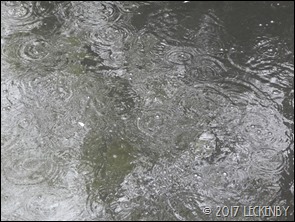
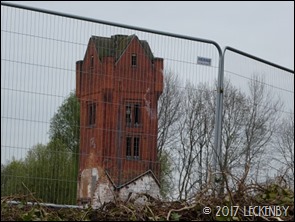 The river now flows through an old industrialised area. The old Wolsey Factory has been demolished apart from one of it’s chimneys and the water tower. A scheme to build houses and apartments incorporating the landmarks was given conditional planning permission last year. If you want to see what the sight was like before demolition here is a link. Other old factories have been refurbished and are most probably offices and apartments. This stretch must get a lot of silt dumped in it from the river as it is usually quite black and bubbly. As Mick jumped off to set Limekiln Lock the noise was almost deafening, it sounded like I’d just put a whole packet of Space Dust (popping candy) into my mouth. I was reminded of kids in the 80’s saying that if you ate too much Space Dust it would give you brain damage, certainly the smell coming off the river could do you some damage.
The river now flows through an old industrialised area. The old Wolsey Factory has been demolished apart from one of it’s chimneys and the water tower. A scheme to build houses and apartments incorporating the landmarks was given conditional planning permission last year. If you want to see what the sight was like before demolition here is a link. Other old factories have been refurbished and are most probably offices and apartments. This stretch must get a lot of silt dumped in it from the river as it is usually quite black and bubbly. As Mick jumped off to set Limekiln Lock the noise was almost deafening, it sounded like I’d just put a whole packet of Space Dust (popping candy) into my mouth. I was reminded of kids in the 80’s saying that if you ate too much Space Dust it would give you brain damage, certainly the smell coming off the river could do you some damage.
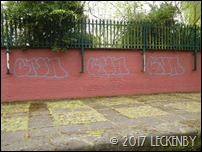
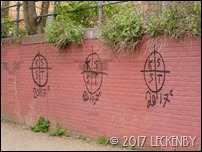 The river to the north of Leicester has an abundance of graffiti. Much is your bog standard tags, you really would think some of them would have perfected it by now and not have to keep practicing it on every facet of walls, or they would simply have got bored with it, but no. Then around Frog Island there are large walls where the graffiti are works of art. Leicester has given permission for several walls around the city to be legally painted on. Short Street is a whole (short) street were anyone can come and leave their mark, the general idea is that you have to better what you are painting over. Certainly the ones by Lock 42 would be hard to beat. Apparently graffiti artists from around the country come to Leicester to make and leave their mark legally.
The river to the north of Leicester has an abundance of graffiti. Much is your bog standard tags, you really would think some of them would have perfected it by now and not have to keep practicing it on every facet of walls, or they would simply have got bored with it, but no. Then around Frog Island there are large walls where the graffiti are works of art. Leicester has given permission for several walls around the city to be legally painted on. Short Street is a whole (short) street were anyone can come and leave their mark, the general idea is that you have to better what you are painting over. Certainly the ones by Lock 42 would be hard to beat. Apparently graffiti artists from around the country come to Leicester to make and leave their mark legally.
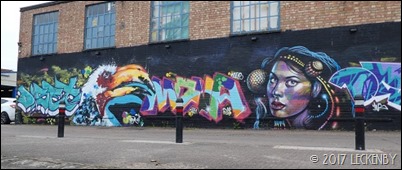
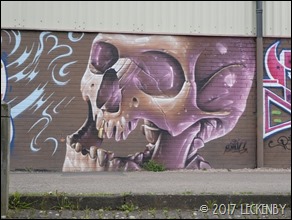
 Here Mick was offered help by a young lad who had ridden shot gun on his Grans mobility scooter. He was thrilled to be helping and Mick allowed him to open and close the top gate all by himself, it took a bit of doing for such a little chap, but he managed it then jumped back onto the back of the scooter and they sped away.
Here Mick was offered help by a young lad who had ridden shot gun on his Grans mobility scooter. He was thrilled to be helping and Mick allowed him to open and close the top gate all by himself, it took a bit of doing for such a little chap, but he managed it then jumped back onto the back of the scooter and they sped away.
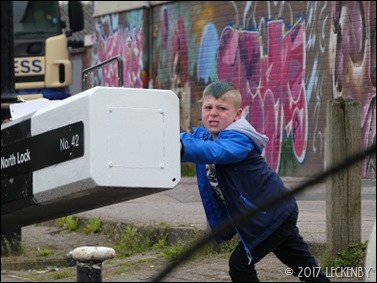
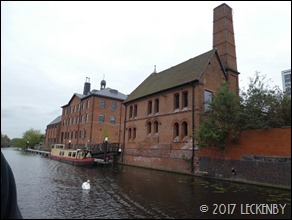
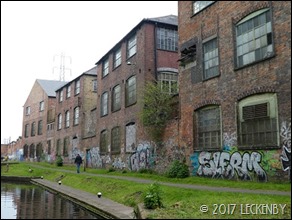 There was plenty of room at the moorings in the centre of the city. One boat on the new pontoons and two on the old. The new pontoons look so much more inviting. It was still morning so we carried on and worked our way past the huge weir by Leicester City ground and on up three more locks to Kings Lock. Here we stopped for a bowl of soup each as the day wasn’t that warm. Somehow we didn’t walk back to the tea room to collect some chilled medication though!
There was plenty of room at the moorings in the centre of the city. One boat on the new pontoons and two on the old. The new pontoons look so much more inviting. It was still morning so we carried on and worked our way past the huge weir by Leicester City ground and on up three more locks to Kings Lock. Here we stopped for a bowl of soup each as the day wasn’t that warm. Somehow we didn’t walk back to the tea room to collect some chilled medication though!
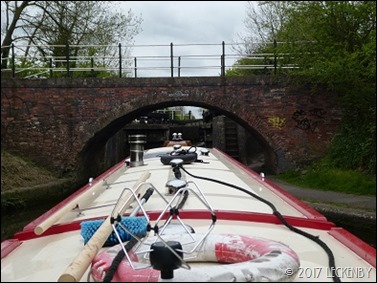
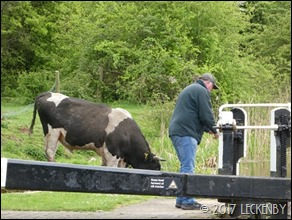
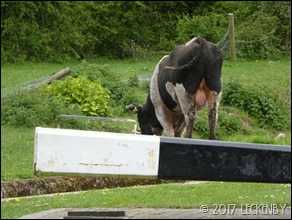 It being still early we decided to carry on to Kilby Bridge the next good mooring. Now that we were off the river and on canals all the way to Crick our life jackets were hung up and the locks took on the familiar look of the Grand Union with a set of steps either side. We’ve broken this journey up before by stopping in Leicester, today the last few locks were just (dare I say it) boring! Mick nearly got another helper at one lock, a bit bigger than his assistant earlier in the day. Good job he wasn’t wearing red. It got chillier and chillier so the stove was lit as soon as we pulled up for the day.
It being still early we decided to carry on to Kilby Bridge the next good mooring. Now that we were off the river and on canals all the way to Crick our life jackets were hung up and the locks took on the familiar look of the Grand Union with a set of steps either side. We’ve broken this journey up before by stopping in Leicester, today the last few locks were just (dare I say it) boring! Mick nearly got another helper at one lock, a bit bigger than his assistant earlier in the day. Good job he wasn’t wearing red. It got chillier and chillier so the stove was lit as soon as we pulled up for the day.
 16 locks, 11.87 miles, 62 waving kids, 1 unflatable, 1 bonfire, 6 packets of Space Dust, 33 tags, 1 super strong lad, 3 swan near misses, 1 sleeping man, 0 grass cuttings, 0 chilled medication!!! 2 bowls soup, 2 weeks, 1 strawberry nose, 2 strawberry cheeks, 1 fat dog, 2 weeks is up, 3 hanging, 1 bull behind you!, 2 weeks Hello! I’m still here!! 18 inches down, 0 freedom for 2 WEEKS, Did you hear me 2 weeks is up now!!!!
16 locks, 11.87 miles, 62 waving kids, 1 unflatable, 1 bonfire, 6 packets of Space Dust, 33 tags, 1 super strong lad, 3 swan near misses, 1 sleeping man, 0 grass cuttings, 0 chilled medication!!! 2 bowls soup, 2 weeks, 1 strawberry nose, 2 strawberry cheeks, 1 fat dog, 2 weeks is up, 3 hanging, 1 bull behind you!, 2 weeks Hello! I’m still here!! 18 inches down, 0 freedom for 2 WEEKS, Did you hear me 2 weeks is up now!!!!
Joa will you please adopt me!
This is a dual post with NB Lillyanne’s blog
